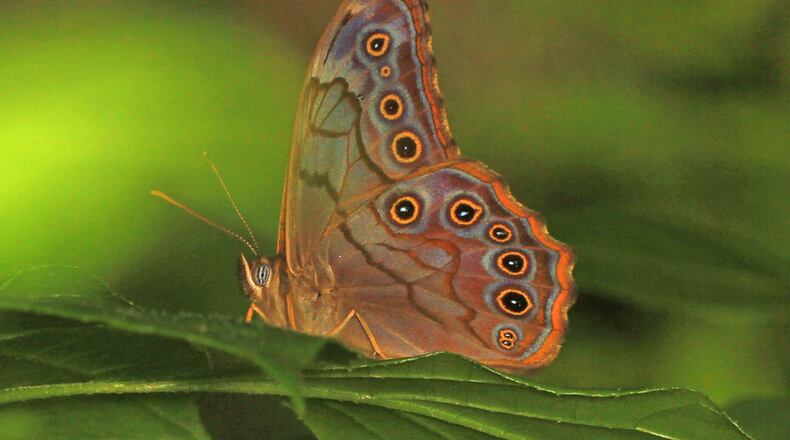In 2003, developers of the sprawling Mall of Georgia in Gwinnett County found themselves with 88 acres of “leftover” land nestled between two interstate highways, consisting of wetlands, meandering streams, woodlands with century-old trees and other natural habitats.
It wasn’t good land for development, but it was excellent for wildlife. The property was donated to the Georgia Wildlife Federation, which promised to turn it into a nature preserve where the public could observe wildlife and seek serenity.
The GWF kept its promise. With the help of legions of volunteers, Boy Scouts and corporate donors, the Mill Creek Nature Center next to the bustling mall is now one of metro Atlanta’s prime wildlife havens and a gem of lush natural beauty.
That’s what drew us members of the Over the Hill Hiking Group, based at Oak Grove United Methodist Church in Decatur, there last week. We found the preserve replete with superb walking trails, boardwalks, duck blinds, an observation tower and two bridges across the creeks.
Hank Ohme, Mill Creek’s manager, reeled off an impressive list of wildlife species observed there over the years, including 150 bird species, 49 butterfly species and 61 dragonfly species.
An intensive effort to remove invasive species such as Chinese privet also has led to a return of native plants vital to native wildlife. For instance, river cane, Georgia’s only native bamboo, is springing up all over the preserve because of privet removal. River cane is the only host plant for caterpillars of the creole pearly-eye butterfly and the lace-winged roadside skipper butterfly, whose numbers are noticeably increasing at Mill Creek.
POLLINATOR COUNT: Butterflies, moths, bees, wasps and other pollinators are crucial to Georgia's agriculture and backyard gardens. But no one really knows how many there are. Next weekend (Aug. 23-24) you can help gauge their status by participating in the Great Georgia Pollinator Census — from your own yard. More information: https://GGaPC.org.
IN THE SKY: From David Dundee, Tellus Science Museum astronomer: The moon will be last-quarter on Friday. Only two planets are visible now: Jupiter is in the south at dusk. Saturn rises out of the east just after dark.
About the Author
Keep Reading
The Latest
Featured


